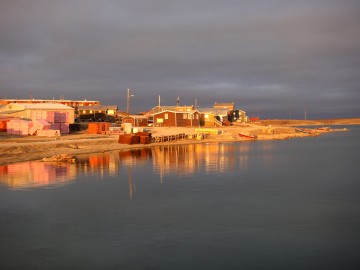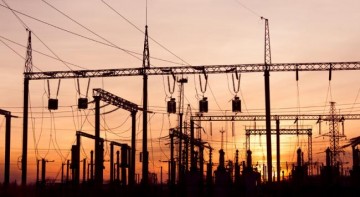 In recent years, technologies related to energy storage and other distributed energy resources (such as renewable microgrids) have significantly improved and become more economical. Several projects across Canada have already leveraged the declining costs and maturing technology of battery systems to store electricity from the grid or from community-based renewable generation.
In recent years, technologies related to energy storage and other distributed energy resources (such as renewable microgrids) have significantly improved and become more economical. Several projects across Canada have already leveraged the declining costs and maturing technology of battery systems to store electricity from the grid or from community-based renewable generation.
These trends of decreasing costs and maturing technology, and the potential for the use of this technology in circumstances where a connection to the main energy grid is not available, are creating more opportunities for remote Indigenous communities to reduce reliance on diesel fuel and enhance energy security by investing in energy storage and distributed energy resources.
What you need to know
- Connections to the power grid may not always be viable. Many remote Indigenous communities depend on diesel generation or long radial power lines for electricity, which are subject to significant reliability, safety and environmental limitations. While transmission lines may be built to connect certain remote communities (e.g., the Wataynikaneyap Transmission Project connecting 17 remote First Nations in northwestern Ontario), similar projects may not always be economically or technically viable.
- Energy storage facility development on the rise. Across Canada, Indigenous communities and project proponents have deployed, or are considering developing, energy storage facilities, often coupled with renewable generation from solar, wind or hydro resources, as a way to reduce diesel reliance and provide much-needed supply diversification and reliability.
- Collaboration key to integration. While battery systems have declined in price and improved in performance over time, their integration with generation facilities remains a technologically complex task, requiring considerable investment and expertise. Widespread adoption of energy storage in remote Indigenous communities may require governments and industry participants to work together to adapt existing regulatory and business models.
Discussion
Reliance on diesel fuel
There are approximately 170 Indigenous communities in Canada (with a combined population of over 100,000 individuals) that are not connected to the electricity grid or natural gas distribution network1. These communities primarily rely on diesel fuel for electricity generation and heating, requiring long-range transport of fuel by airplane, truck or barge (when weather conditions permit). This results in significant environmental, safety, and reliability impacts, including lengthy blackouts during the winter months, substantial greenhouse gas emissions and the risk of spills.
Even in areas where a grid connection is available, a conductor outage (which typically involves radial single circuit lines strung over long distances) requires significant efforts to troubleshoot and restore supply. While back-up diesel generation can fill short-term supply gaps, it is often not a reliable replacement for lost capacity during a prolonged blackout.
Growing adoption of energy storage

Distributed energy resources (including renewable microgrids and battery storage) are increasingly being seen as a viable solution for a stable electricity supply. In fact, after Crown and private utilities, Indigenous communities and Indigenous-owned enterprises are now in aggregate the largest owner of renewable energy assets in the country2. Given the intermittent nature of wind and solar resources, storage is considered by many proponents to be essential to the penetration of such renewable technologies in off-grid service areas. The adoption of energy storage may make further renewable energy development by remote communities more attractive.
Two utility-backed energy storage projects have recently been implemented in Ontario. Aroland First Nation, 350 km northeast of Thunder Bay, is working with Hydro One on a pilot battery project to supply the community in the event of upstream outages (with an expected outage duration reduction of 60%)3. Gull Bay First Nation, 175 km north of Thunder Bay, is working with Ontario Power Generation on a microgrid (owned and operated by the Gull Bay First Nation) that integrates solar panels and battery storage to offset diesel use by up to 30%.
Other provinces and territories have also seen remote energy projects that leverage storage to enhance the reliability of supply, including the Three Nations Energy Solar Farm (paired with battery storage) in Alberta, the Kitasoo First Nation storage project (paired with an existing lake-fed hydroelectric facility) in British Columbia, the Old Crow Solar Farm (paired with battery storage) in Yukon, and the Hamlet of Arviat project (incorporating wind, solar and battery storage) in Nunavut. Similar to the Gull Bay microgrid, these projects leverage hybrid systems that combine renewable resources (wind, hydroelectric, solar) or diesel generation with batteries to store and discharge power according to load demand.
Integration challenges
The reduced cost and improved technology of energy storage infrastructure may be an attractive option for remote communities, particularly when coupled with distributed energy generation (i.e., generation near where electricity is consumed), to form a sustainable microgrid. Proponents will have to consider a number of factors, including applicable technical issues, accessibility of funding, regulation of microgrids, and the importance of meaningful Indigenous consultation.
While the cost of energy storage itself has fallen, the integration of battery systems with renewable generation is still complex and requires expensive technologies as well as operation and maintenance costs over the project lifecycle. This has led some utility proponents and Indigenous independent power producers (IPPs) to explore alternative ownership and operational models, including a split between utility-control of storage/control systems and IPP-control of generation assets4.
Accessibility of funding is also important to jumpstarting these projects. A Pembina Institute study found that while government programs (e.g., the federal Clean Energy for Rural and Remote Communities initiative) have enabled or accelerated projects, some Indigenous power proponents still face challenges in accessing urgently-needed funding as well as navigating the rules of various new programs administered by different agencies5.
Regulatory barriers also need to be addressed. Given the growing interest in community-based microgrids, regulators across Canada are wrestling with a number of questions, including the extent to which renewable microgrids should be regulated, how projects should be allowed to recover development costs, how tariff rates for microgrid customers should be structured, how stranded assets (if any) of incumbent utilities are addressed, how stranded environmental liabilities will be addressed, as well as who should regulate the quality and reliability of energy supply for the communities being served6. Incentivizing the transition away from diesel in communities already served by an incumbent utility could also require a shift from the traditional model which compensates asset owners for their investments to one that attaches greater value to innovation and public interest outcomes, such as environmental sustainability, safety, and reliability.
As with any project that may affect Indigenous communities or rights, early and meaningful two-way consultation will be essential. As noted in another Torys bulletin, Getting projects built during the pandemic, Indigenous communities are increasingly involved as leading proponents or equity owners in the development of infrastructure projects, and it is important to ensure that Indigenous peoples share in the resulting economic benefits. This is equally true for the development of energy storage projects in remote Indigenous communities.
